- News
- Reviews
- Bikes
- Accessories
- Accessories - misc
- Computer mounts
- Bags
- Bar ends
- Bike bags & cases
- Bottle cages
- Bottles
- Cameras
- Car racks
- Child seats
- Computers
- Glasses
- GPS units
- Helmets
- Lights - front
- Lights - rear
- Lights - sets
- Locks
- Mirrors
- Mudguards
- Racks
- Pumps & CO2 inflators
- Puncture kits
- Reflectives
- Smart watches
- Stands and racks
- Trailers
- Clothing
- Components
- Bar tape & grips
- Bottom brackets
- Brake & gear cables
- Brake & STI levers
- Brake pads & spares
- Brakes
- Cassettes & freewheels
- Chains
- Chainsets & chainrings
- Derailleurs - front
- Derailleurs - rear
- Forks
- Gear levers & shifters
- Groupsets
- Handlebars & extensions
- Headsets
- Hubs
- Inner tubes
- Pedals
- Quick releases & skewers
- Saddles
- Seatposts
- Stems
- Wheels
- Tyres
- Health, fitness and nutrition
- Tools and workshop
- Miscellaneous
- Tubeless valves
- Buyers Guides
- Features
- Forum
- Recommends
- Podcast
feature
 pinarello-dogma-k8-s-ian-stannard-paris-roubaix-2016-1-2
pinarello-dogma-k8-s-ian-stannard-paris-roubaix-2016-1-2Why aren’t more all-road bikes like Pinarello’s Dogma K8-S?
All-road bikes have been around for years, but suspension has never really been in the game – although Pinarello had a good go at getting suspension accepted on the road with the K8-S race bike that Ian Stannard rode to a podium finish at Paris-Roubaix in 2016.
What’s an all-road bike, then? There’s rarely unanimity on definitions like this but most people would agree that an all-road bike sits somewhere between a standard road bike and a gravel bike. It’s not meant for tracks and trails, but it is intended for tackling everything from smooth asphalt to light gravel.
Think of a gravel bike, then dial it back a bit. Or, from the other perspective, think of a road bike, then beef it up a bit. The Salsa Warroad is a classic example. When reviewing that bike just after it was launched in 2019, our man Stu Kerton said, “There is very little the Salsa Warroad can't do – it's capable on the road, on the gravel and everything in between.”
Wider tyres than a road bike, features designed to smooth the ride, drop bars… You get the picture.
We were talking about all-road bikes here on road.cc at least a decade ago – probably much longer. When Specialized introduced its Diverge in 2014, we said, "A growing category of road bikes at the moment is personified by the brand new Diverge, an adventure and gravel bike capable of riding on more than just smooth tarmac, with big tyre clearance, disc brakes and rack and mudguard mounts making it a really versatile bike."
Trek's Domane arrived back in 2012 with its IsoSpeed decoupler that allowed the seat tube (and therefore the saddle) to move independently of the rest of the frame. Although Trek now describes its Domanes as all-road bikes, you'd struggle to call those early models anything other than endurance road bikes.
RockShox’s suspension fork was used at Paris-Roubaix way back in the early 1990s, but it never gained all that much traction, and full-suspension Bianchis were ridden later in the decade. Even so, Pinarello’s K8-S design was still very unusual in 2016.
Team Sky’s Ian Stannard raced to third place at Paris-Roubaix that year on this bike behind Mathew Hayman and Tom Boonen. Hayman famously won aboard a Scott Foil aero road bike. His only real modification for the cobbles was opting for 28mm tubular tyres – wide for that era.
Stannard, who finished just two or three bike lengths behind and was given the same time, was on a very different bike. We got the chance to check it out at Team Sky’s Service Course (the team’s logistics HQ) in Belgium, still plastered in Paris-Roubaix mud.
The key feature of the K8-S was the DSS 1.0 (Dogma Suspension System), a shock positioned between the seatstays and the seat tube. There were no pivots down below, the travel relying on flex in the chainstays.
Team Sky – the predecessor of Ineos Grenadiers, of course – asked Pinarello to develop this model specifically for the cobbles.
At the time Pinarello said, “The Dogma K8-S is the result of a specific request of Team Sky: to have an innovative frame able to reduce the psycho-physical stress of the athletes, and thus increase the performance in the Hell of the North.
“As with the Dogma F8, we assembled our team of Italian and British engineers, who collaborated to put on the road a bike with well-defined characteristics: vertically compliant yet stiff at the same moment and of course maintaining the weight of a road bike.”
Have you ever heard a bike brand not wheel out the 'laterally stiff and vertically compliant' thing?
Pinarello claimed that the frame, complete with suspension, weighed 990g (53cm model), and that it improved rider comfort by as much as 50%.
> First Ride: Pinarello Dogma K8-S
The DSS 1.0 wasn’t particularly sophisticated, containing an elastomer that squashed down by up to 10mm when you rode over bumps like the Paris-Roubaix cobbles, but less than half that over the sort of bumps you experience on regular asphalt.
Pinarello also made a few changes to the geometry, steepening the head angle and reducing the fork rake to make the steering twitchier. Why would you do that on a bike designed for rough surfaces? Well, Pinarello also increased the length of the chainstays to induce the extra flex at the back. Naturally, that meant that the wheelbase was extended which increased stability.
> Bike geometry 101: Learn why frame angles & trail matter
We rode the Pinarello Dogma K8-S briefly at the Eurobike show in 2015, reporting, “The rear suspension really does make a big difference to the character of the ride, taking the edge off uneven surfaces and softening the impact of larger lumps and bumps.’
Pinarello didn’t see the bike as just for the pavé but for regular endurance rides, even on standard roads.
Fizik made its Arione saddles with extra padding for some riders, including Ian Stannard, to help handle the cobbles.
You could see the result of all the bump-induced chain slap on the flattened driveside chainstay.
A sticker on the top tube gave the point in the race and the length of each section of cobbles.
The bike was fitted with a Shimano Dura-Ace Di2 electronic groupset with satellite shifters fixed to the drops to provide extra gear-changing options.
In some ways, the Pinarello K8-S was unlike anything we’d today call an all-road bike. For a start, it was fitted with a direct-mount rim brake at the rear and a standard centre-mount design up front. Disc brakes were used in Paris-Roubaix 2016 – and the UCI’s trial of disc brakes in the pro peloton was promptly suspended after claims that they were responsible for injuries – but not on this bike.
Team Sky had used disc brakes – just sparingly – in 2015, but you might remember that the team was the last of the big players to switch over entirely from rim brakes.
Another feature untypical of an all-road bike was the gearing. Stannard rode with a 53-tooth outer chainring and a 44-tooth inner ring. There are no steep hills on the Paris-Roubaix course so smaller gears aren’t needed. The pros are belting across the pavé at ridiculous speeds.
The tyres weren’t particularly larger, either. Stannard’s Shimano Dura-Ace C50 wheels, the 50 referring to the rim depth in millimetres, were fitted with 27mm-wide FMB Paris Roubaix tubulars.
These were incredibly popular among the pro teams for the cobbled Classics, Team Sky buying theirs a year in advance just to make sure they got as many as they needed.
Pinarello doesn’t make the Dogma K8-S anymore, although we recently reviewed the Dogma X Dura Ace Di2, if you’d like to check that out. This bike comes with X Stays that are designed to provide side-to-side stiffness without affecting comfort or compromising stiffness at the bottom bracket.
It looks like manufacturers – and the bike-buying public – have decided that fatter wheels and tyres offer a better solution, and certainly a more cost-effective one. With disc brakes marching onwards and frame/fork clearances getting ever larger, fitting wider tyres isn't a problem.
Even the majority of pro racers in big road races like the Tour de France are on 28mm-wide tyres these days, and most road bikes now offer space for tyres over 30mm. When it comes to anything remotely rough, tyres have ballooned over recent years, and most of us would say that wide tyres have a lot going for them. It's reasonably cheap technology, it's simple, and it works. Do you agree?
> Why wider tyres on road bikes are here to stay
If you’re more interested in all-road bikes, have a read of our new buyer’s guide.
Mat has been in cycling media since 1996, on titles including BikeRadar, Total Bike, Total Mountain Bike, What Mountain Bike and Mountain Biking UK, and he has been editor of 220 Triathlon and Cycling Plus. Mat has been road.cc technical editor for over a decade, testing bikes, fettling the latest kit, and trying out the most up-to-the-minute clothing. He has won his category in Ironman UK 70.3 and finished on the podium in both marathons he has run. Mat is a Cambridge graduate who did a post-grad in magazine journalism, and he is a winner of the Cycling Media Award for Specialist Online Writer. Now over 50, he's riding road and gravel bikes most days for fun and fitness rather than training for competitions.
Latest Comments
- mdavidford 14 min 54 sec ago
OK, but how much is the lack of decent cycling facilities already impacting people who would want to travel by cycle if only they were provided?...
- Jogle 17 min 3 sec ago
Perthshire man left with container full of 500 old bicycles in row with environment chiefs...
- wtjs 20 min 3 sec ago
You need something special to configure a cycle computer that hasn't yet been released
- EK Spinner 20 min 57 sec ago
just re read and saw it was "due care & attention" - again I firmly believe that banned and/or drugged drivers should be on a dangerous driving...
- mctrials23 23 min 38 sec ago
GCN just did a cool video on this. All I could think by the end was that perhaps if you got to do what the presenter did and mince around Italy in...
- ravenbait 32 min 9 sec ago
I missed that, thanks for pointing it out. I can't comment, as that's outside my area of expertise. Apologies to Rendel. This is why they should be...
- wtjs 36 min 11 sec ago
A fully 'evolved' MAMIL is an OMIL- this one has been wearing proper cycling shorts since 69, when they were some wool mixture, I think, and didn't...
- chrisonabike 1 hour 16 min ago
Well my guilty secret (not really) is that my most used and favourite routes in Edinburgh are ... shared use paths! Stuff I often suggest is doing...
- S.E. 15 hours 39 min ago
The real issue is that other people in the sport business get much more than the athletes... I also tend to agree that 8 million a year is already...
- S.E. 16 hours 37 sec ago
Inner width is only 13.4 mm... Will you get Shinano or Campognolo?

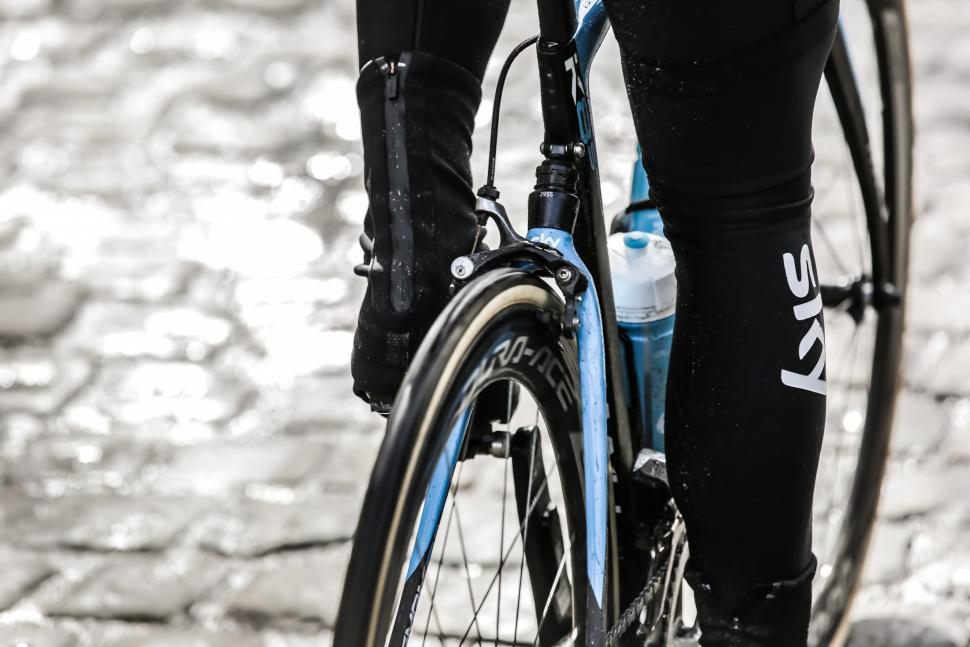

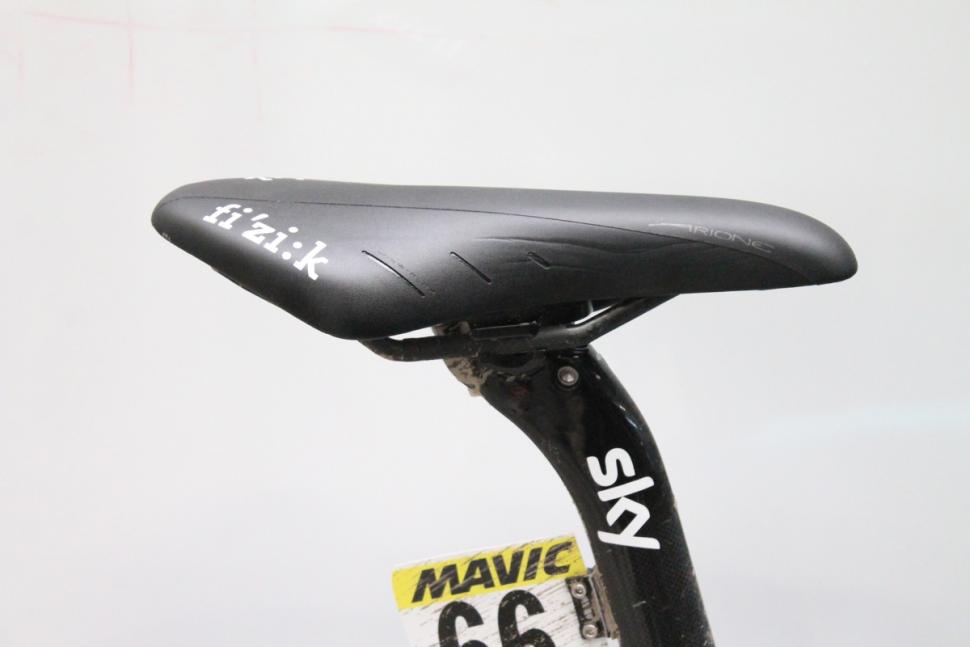
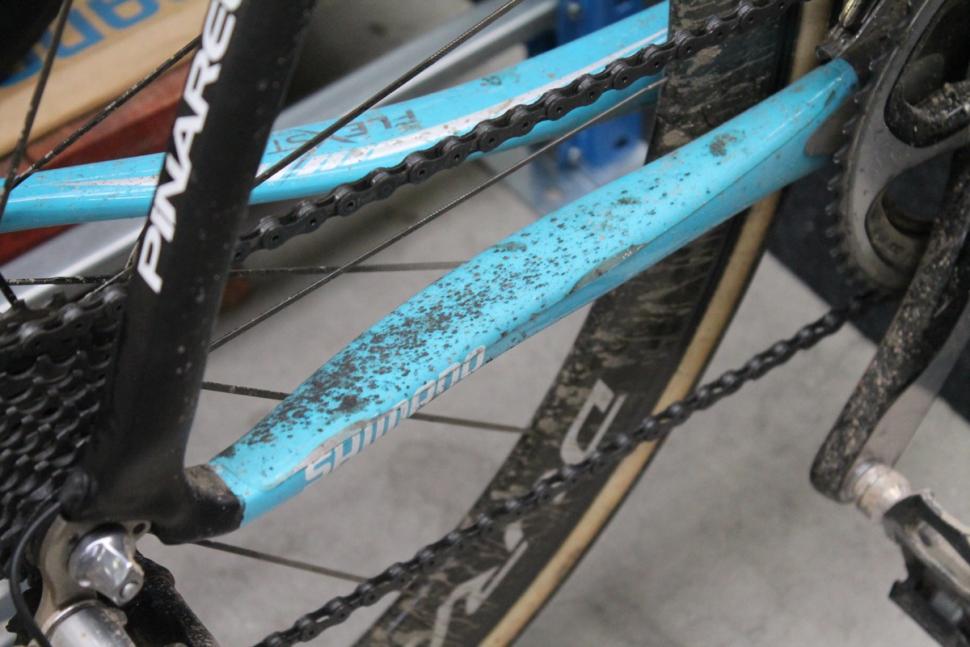
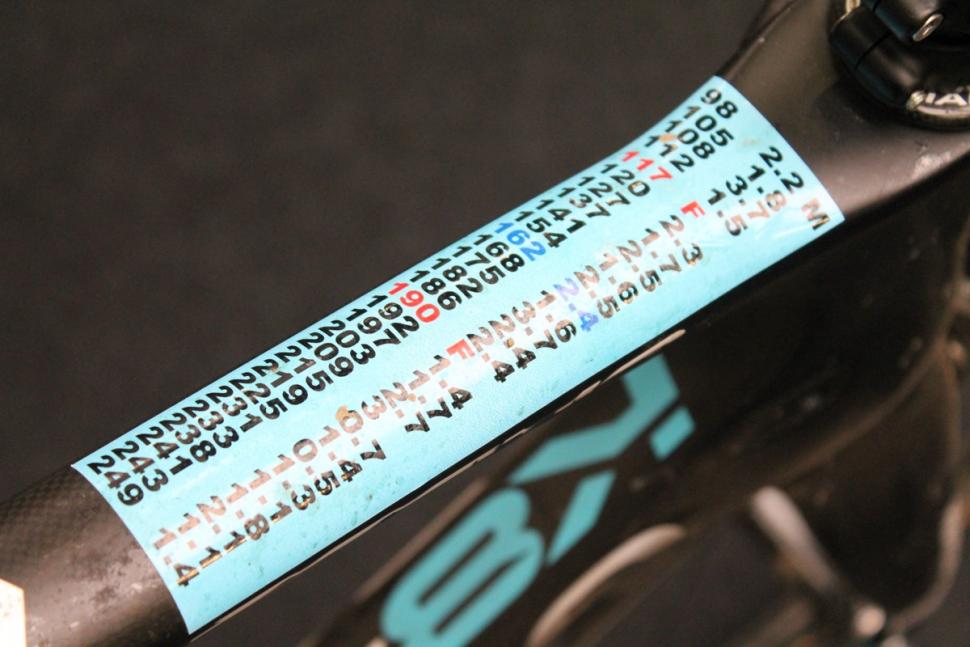

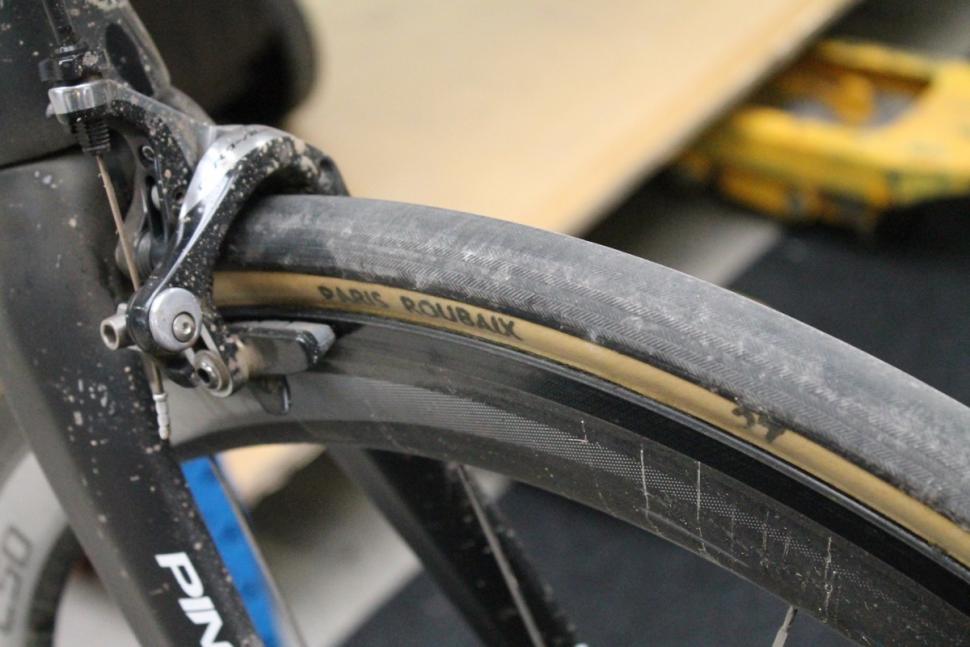

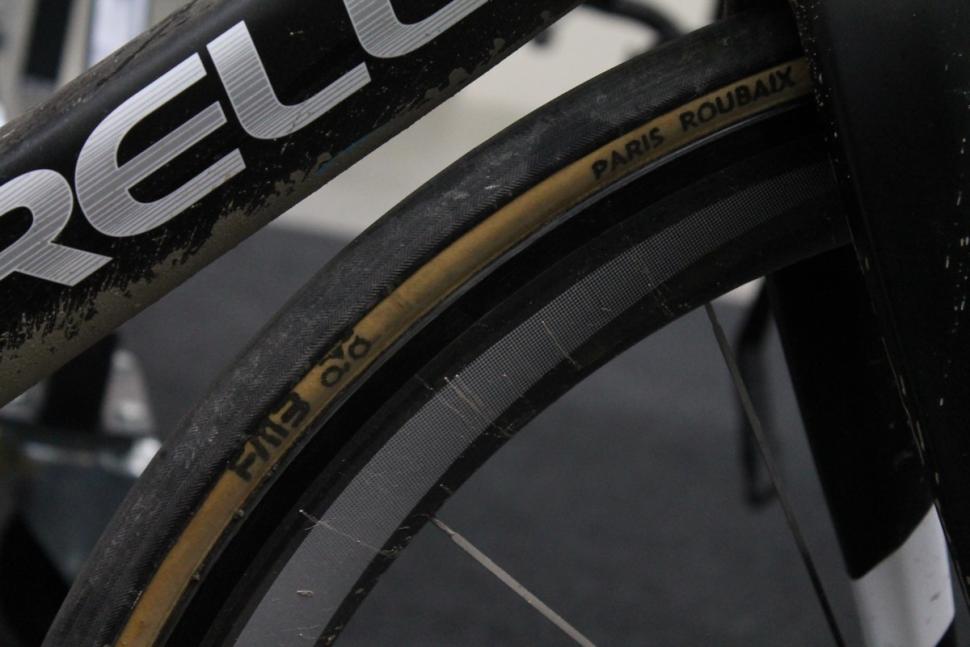
Add new comment
2 comments
A friend bought one. Suspension failed after a few months. After much back and forth with Pinarello, they said the supplier could no longer provide the parts rendering it useless. That was bad enough but Pinarello would not even honour the guarantee and only offered a discount on a new bike. Poor.
Love a bit of Paris-Roubaix bike experimentation.
"..steepening the head angle and reducing the fork rake to make the steering twitchier."
They may have done that and kept trail / 'twitchiness' the same, reduced fork offset stabilises the steering. Any more info on what numbers the geometry actually used?